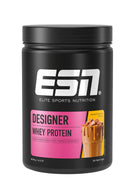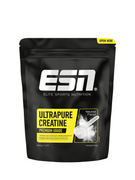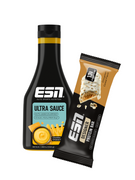Grundsätze einer ausgewogenen Ernährung – dieselbe Basis für alle Körpertypen
Die meisten von uns lieben Essen – vor allem Süßigkeiten und Junk-Food. Wenn ein Mensch zusätzlich „das Glück“ hat, alles essen zu können, ohne davon zuzunehmen, muss es doch das perfekte Leben sein, meinen viele. Im ersten Moment mag es beneidenswert klingen, doch auf den zweiten Blick ist erkennbar, wie fatal es sein kann, wenn der Körper keine Warnsignale – z. B. in Form von Fettleibigkeit – sendet, da die Wahrnehmung von gesundheitlichen Veränderungen somit erst zu einem viel späteren Zeitpunkt erfolgt.
Viele Forschungen zeigen, dass schwere Krankheiten mit einer schlechten Ernährung zusammenhängen.[¹] [²] Nur eines von vielen Beispielen ist das erhöhte Risiko für Herzerkrankungen und Krebs.[³] [⁴] [⁵] Im Gegenzug ist eine gesunde, ausgewogene Ernährung für viele Teile unseres Lebens von Vorteil. Beispielsweise werden unsere Zellen, Organe und Gehirnfunktionen so positiv beeinflusst, dass wir in Summe körperlich auch leistungsfähiger sind.[⁶] [⁷] [⁸] [⁹] Dieser positive Effekt kommt insbesondere in Kombination mit Sport zum Vorschein.[¹⁰]
Damit du weißt, wie sich Kalorien zusammensetzen und somit eine ausgewogene Ernährung aussieht, erhältst du hier einen kurzen Überblick über Makro- und Mikronährstoffe: Bei den Makronährstoffen wird zwischen Kohlenhydraten, Fetten und Proteinen unterschieden. Mit vier Kalorien pro Gramm befinden sich Kohlenhydrate primär in allen stärkehaltigen Lebensmitteln wie Brot, Kartoffeln oder Nudeln. Die Hauptquellen von Proteinen – mit ebenfalls vier Kalorien pro Gramm – sind Fleisch, Eier und Milchprodukte. In Nüssen, Samen und Ölen finden sich primär Fette – diese verfügen über neun Kalorien pro Gramm. Mikronährstoffe sind wichtige Vitamine und Mineralstoffe, die unser Körper nur in kleineren Mengen, aber dennoch benötigt, um wichtige Stoffwechselprozesse und Funktionalitäten auszuüben – kurz gesagt sichern sie unser Überleben und müssen daher über die Nahrung aufgenommen werden. Beispiele sind Magnesium, Kalium, Eisen, Kalzium und alle Vitamine von A bis K. Die meisten Gewinne ziehen wir Menschen aus Vollwertkost, also aus natürlichen, unverarbeiteten Lebensmitteln, die reich an Nährstoffen sind und eine geringe Energiedichte aufweisen. Sie sind also das genaue Gegenteil von Süßigkeiten und Junk-Food, da diese verarbeitet wurden und demnach einen geringen Nährwert aufweisen und „leere Kalorien“ mit sich bringen.
Sicherlich erkennst du bereits, dass es höchst sinnvoll ist, deine Mahlzeiten in erster Linie aus Gemüse, Obst, Fleisch und Fisch, Nüssen, Samen, Hülsenfrüchten und gesunder Milchprodukte zusammenzustellen. Verzichte dabei möglichst auf industriellen Zucker und Transfette. Kein Hexenwerk, oder? Vor allem unterscheidet sich dieses Vorgehen kein Stück von dem der anderen Stoffwechseltypen. Für uns Menschen ist eine ausgewogene Ernährung der Garant für ein gesundes Dasein. Beachte diese Punkte daher unbedingt für deinen Hardgainer-Ernährungsplan.
Das A & O für Muskelwachstum – der Kalorienüberschuss
Vielen Menschen wird nachgesagt, dass sie Hardgainer seien, bloß, weil sie trotz regelmäßigen Trainings vermeintlich nicht an Muskulatur zunehmen. Dabei wird jedoch erstens vergessen, dass einem Hardgainer auch eine erhöhte Stoffwechselrate und ein spezifisches körperliches Dasein zugeschrieben werden und zweitens, Training allein nicht das Ausschlaggebende für den Muskelaufbau ist. Eine Faustformel besagt, dass jedes körperspezifische Ziel durch 30 % der Anpassungen im Training und 70 % der Anpassungen der Ernährung ausgemacht werden. Hieran erkennst du ein weiteres Mal, wie wichtig eine ausgewogene Ernährung für dich als Hardgainer ist und weshalb du einen Hardgainer-Ernährungsplan parat haben solltest!
Wie bereits erklärt, setzt sich jedes Nahrungsmittel aus verschiedenen Makro- und Mikronährstoffen zusammen, wodurch du deinem Körper Kalorien zuführst. Jeder Organismus verfügt über einen Grundbedarf an Kalorien, den es zu decken gilt, damit die körperlichen Prozesse problemlos vonstattengehen. Je mehr Bewegung wir in unseren Alltag einbauen, desto mehr verbrennt unser Körper und der sogenannte Leistungsumsatz steigt. Daraus ergibt sich eine logische Schlussfolgerung: Verbrennst du mehr Kalorien als du zu dir nimmst, baut dein Körper Fettreserven und Muskulatur ab. Halten sich Verbrauch und Aufnahme in Waage, handelt es sich weder um eine positive, noch um eine negative Kalorienbilanz, sodass dein Körper die normalen Funktionalitäten abrufen kann, aber weder Muskulatur bzw. Fett auf- noch abbaut. Essenziell für ein Muskelwachstum ist somit ein Kalorienüberschuss – das bedeutet, du nimmst täglich mehr Kalorien zu dir als du verbrauchst. Hier liegt häufig der eigentliche Fehler von Menschen, die sich als Hardgainer bezeichnen. Sie sind sich selten ihres Kalorienbedarfs und der täglichen Zufuhr bewusst. Um dieses Problem auszuhebeln, solltest du dich an ein Ernährungstagebuch heranwagen, um deine aufgenommenen Kalorien aufzuzeichnen und diese ins Verhältnis zu deinem Grund- bzw. Leistungsumsatz, den du mithilfe von Kalorienrechnern im Internet berechnen kannst, zu setzen. Da der Stoffwechsel eines ektomorphen Körpertypen überdurchschnittlich schnell ist, empfehlen wir dir mit einem Kalorienüberschuss von circa 500 Kalorien zu starten. Du kannst deinen Überschuss sukzessive erhöhen. Solltest du Sorge haben, dass 500 Kalorien zu viel sein könnten, starte zunächst bei 250 Kalorien. Dein Hardgainer-Ernährungsplan kann dir dabei helfen, deine Kalorienzufuhr genau zu durchtakten. Willst du mehr über das Thema Masse aufbauen erfahren, haben wir auch dafür Infos für dich zusammengefasst.
Tipps für deine Ernährung als Hardgainer
Täglich bis zu 500 Kalorien mehr zu sich zu nehmen, ist alles andere als leicht – vor allem dann, wenn du dich sowieso schon naturgemäß unter deinem eigentlichen Bedarf ernährt hast. Deswegen haben wir im Folgenden ein paar Tipps, die du neben deinem Hardgainer-Ernährungsplan berücksichtigen kannst, damit dir die Nahrungsaufnahme leichter fällt:
Auf Basis des Kauprozesses setzt dein Gehirn ab einem bestimmten Zeitpunkt automatisch ein Sättigungsgefühl ein. Aus diesem Grund wird Personen, die abnehmen möchten, häufig empfohlen, langsamer und achtsamer zu kauen, damit das Gehirn dem Magen frühzeitig suggeriert, dass er voll sei, auch wenn er es noch gar nicht ist. Das Prinzip kannst du umkehren, indem du deutlich schneller kaust als üblich. Kaue aber auf keinen Fall weniger, denn sonst tust du deinem Magen und deinem Darm keinen Gefallen!
Daraus schließt sich direkt der zweite Tipp: Kauen musst du primär nur bei fester Nahrung. Flüssige Nahrung sättigt dadurch weniger bzw. langsamer als feste Nahrung. Schon in naher Zukunft könnte der Mixer dein liebstes Küchentool werden, um dir energiereiche Shakes zusammenzustellen.
Proteine stellen den sättigendsten Makronährstoff dar. Gerade in Bezug auf dein Krafttraining solltest du deinen Bedarf unbedingt decken, doch achte darauf, nicht zu viel von ihnen aufzunehmen, da sie einen größeren Verdauungsaufwand benötigen und dich somit deutlich länger satthalten als Kohlenhydrate oder Fette. Gemüse enthält wichtige Ballaststoffe, verfügt aber auch über ein großes Volumen. Vernachlässige auch dieses nicht, aber lege den Fokus verstärkt auf gesunde Fette und komplexe Kohlenhydrate.
Krafttraining für eine Muskelhypertrophie und ergänzende Supplements

Neben der großen „Gefahr“, dass du zu wenige Kalorien zum Muskelaufbau zu dir nimmst, kann ein weiterer Fehler beim Krafttraining lauern. Insbesondere für Hardgainer ist ein sehr hartes und auf das Ziel angepasste Krafttraining wichtig, damit die Muskelhypertrophie angesprochen und die weniger vorhandenen ST-Fasern ausgiebig gereizt werden. Worauf du beim Training als Hardgainer achten solltest, erfährst du in unserem Beitrag zum Hardgainer Trainingsplan.
Das Thema Supplements betrifft dich gleicher Maßen wie andere (Kraft-)Sportler auch. Mit ihnen kannst du ein wenig nachhelfen, wobei du sie keinesfalls als Mahlzeitenersatz verwenden solltest. Sollte dich die Nahrungsergänzung weitergehend interessieren, schaue auch mal bei unserem allgemeinen Artikel zum Thema Hardgainer vorbei – dort findest du die besten Supplements für Hardgainer.
Orientierung für deinen Ernährungsplan als Hardgainer
Da du als ektomorpher Stoffwechseltyp den Tag über einiges an Kalorien aufzunehmen hast, bietet es sich an, eine sinnvolle Aufteilung vorzunehmen und einen Ernährungsplan aufzustellen, damit du den Überblick nicht verlierst. Je mehr Kalorien du konsumieren musst, desto höher sollte die Anzahl deiner Mahlzeiten ausfallen, da sich dein Kalorienziel so definitiv leichter erreichen lässt. Versuche im Idealfall alle zwei bis drei Stunden Nahrung zu dir zu nehmen. Wenn du viel unterwegs bist, bedarf dies eines guten Mealpreps – also die Vorbereitung von Mahlzeiten.
An einem Trainingstag könnte dein Hardgainer-Ernährungsplan beispielsweise wie folgt aussehen:
- 07:00 Uhr – Frühstück
- 09:30 Uhr – Snack
- 12:00 Uhr – Mittagessen
- 15:00 Uhr – Pre-Workout Shake
- 17:00 Uhr – Post-Workout Shake
- 18:30 Uhr – Abendessen
- 21:00 Uhr – Snack
Achte dabei unbedingt auf deinen Proteinbedarf von rund zwei Gramm pro Kilogramm Körpergewicht, ausreichend, aber nicht zu viel Obst und Gemüse, gesunde Fette durch Fisch, Weiderindfleisch, Nüssen, Samen oder Kerne und zuletzt auf komplexe Kohlenhydrate aus beispielsweise Kartoffeln, Haferflocken oder naturbelassenem Reis.
Tipp: Wenn du Milch verträgst und mal Zeit und/oder Lust fehlen, bietet sie sich ab und an auch mal ohne weitere Vermengungen an, da sie von Natur aus sehr nährstoff- und energiereich ist. Im Idealfall greifst du hierbei aber auf nicht homogenisierte Bio-Milch zurück.
Disziplin und Geduld – dein Weg zu einem muskulösen Körper als Hardgainer
Muskelaufbau als Hardgainer ist vielleicht nicht ganz so einfach, aber definitiv nicht unmöglich. Wenn du dich an die zuvor genannten Punkte hältst und vor allem den Kalorienüberschuss in Kombination mit einem schweren Krafttraining beachtest, steht deinem Muskelwachstum so gut wie nichts mehr im Wege. Doch wie vieles andere im Leben handelt es sich auch dabei um einen Prozess. Du solltest daher viel Ruhe, Geduld und Disziplin aufbringen, damit du nicht frühzeitig aufgibst und den Kopf in den Sand steckst. Denke immer daran, dass du mit dem Problem nicht alleine bist und es genügend Menschen auf der Welt gibt, die diesen Weg bereits gegangen sind. Bleib dran und sei bereits bei den kleinsten Erfolgen stolz auf dich!
Quellen:
[1] https://pubmed.ncbi.nlm.nih.gov/12450892/
[2] https://pubmed.ncbi.nlm.nih.gov/11124751/
[3] https://pubmed.ncbi.nlm.nih.gov/23432189/
[4] https://www.ncbi.nlm.nih.gov/pmc/articles/PMC2515569/
[5] https://www.cdc.gov/nchs/fastats/leading-causes-of-death.htm
[6] https://pubmed.ncbi.nlm.nih.gov/24183706/
[7] https://pubmed.ncbi.nlm.nih.gov/22014537/
[8] https://pubmed.ncbi.nlm.nih.gov/23517914/








